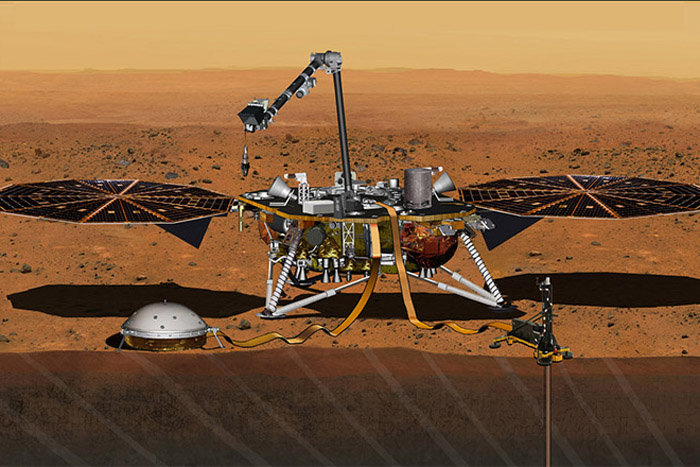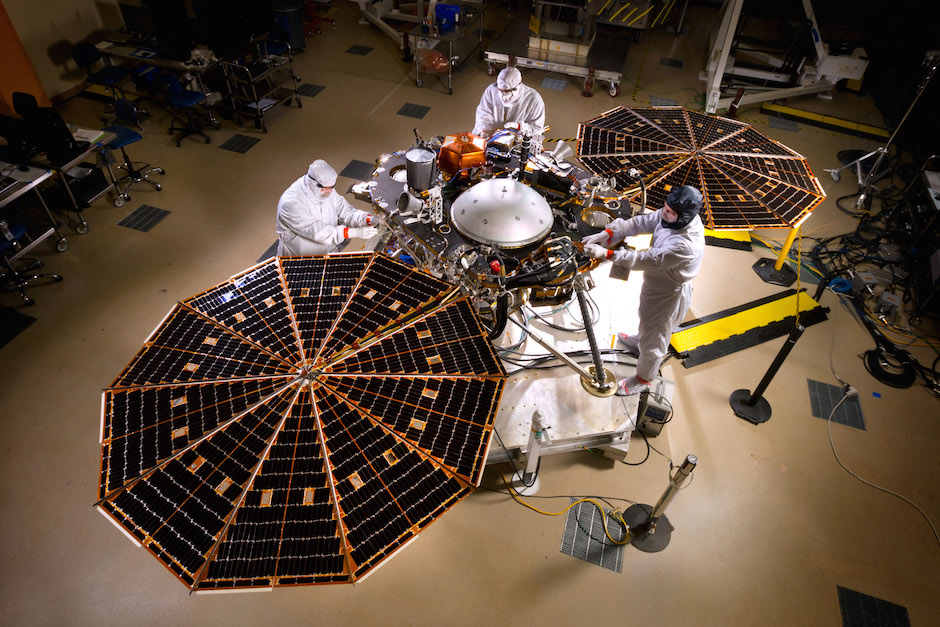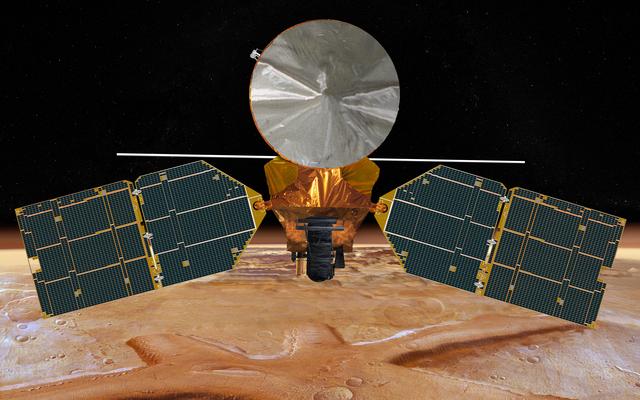
Artist’s depiction of InSight spacecraft on the surface of Mars.
Credit: NASA/JPL-Caltech
NASA had hoped its next Mars probe would have launched by now. Instead, the agency is mulling whether to spend an extra $150 million to fix a problem with the spacecraft and re-target liftoff for May 2018, the next time Earth and Mars favorably align for flight.
“The fact that I’m standing here talking to you, instead of gloating on the phone (from the Mission Control Center) is a clue that things haven’t gone as well as one may have hoped,” project scientist Bruce Banerdt told a Mars exploration planning group last week.
Launch of InSight, which is designed to study the deep interior of Mars, had been targeted for Friday, March 4. But preparations came to a sudden halt in late December after a nagging technical problem with the spacecraft resurfaced for a fourth time. By then, it was too late to finish another round of repairs before the 2016 launch window closed.
“Everything was ready to go, but then we kind of went off the rails,” Banerdt said.







